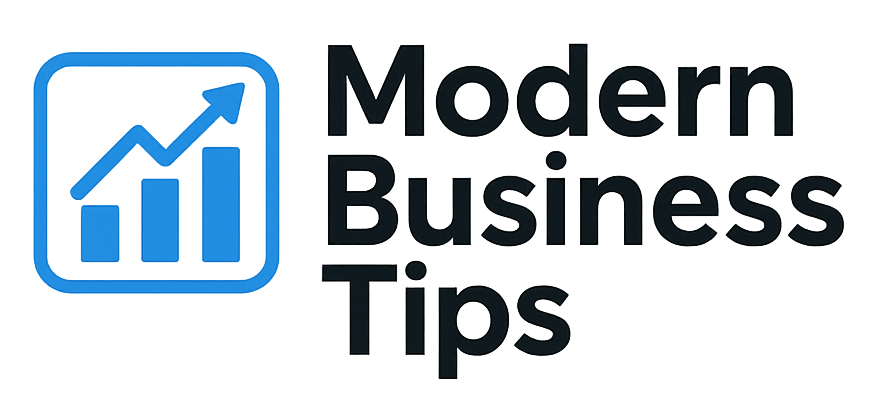Starting an ecommerce business is exciting, as more people shop online for ease. In this guide, I’ll share key tips and steps to launch an online store. It’s a great way to reach more customers and make good money with little cost. This guide will help you understand ecommerce step by step.
I’ll explain how to start an ecommerce store, manage it, and estimate costs. With the right plan, starting an online store can be easy and rewarding.
Key Takeaways
- Understand the foundational concepts of ecommerce.
- Identify your target audience for better marketing.
- Create a solid business plan as a roadmap for success.
- Select an appropriate ecommerce platform that fits your needs.
- Optimize your online store with essential features and design.
- Implement effective marketing strategies to grow your customer base.
Understanding the Basics of Ecommerce
Ecommerce is all about buying and selling online. It’s a digital marketplace that offers many chances. Many entrepreneurs see it as a flexible and efficient way to sell to customers.
What is Ecommerce?
Ecommerce means doing business on the internet. It can be through retail sites or online marketplaces. For those starting an ecommerce business, knowing this is key. It lets you sell to people all over the world.
Types of Ecommerce Models
There are different ecommerce models to choose from. The main ones are:
- Business-to-Consumer (B2C): Companies sell directly to people, like Amazon or Walmart.
- Business-to-Business (B2B): Businesses sell to other businesses, like manufacturers to retailers.
- Consumer-to-Consumer (C2C): People sell to other people, seen on sites like eBay.
- Consumer-to-Business (C2B): Individuals sell to businesses, like freelancers.
Each model has its own benefits and challenges. I need to understand these to succeed.
Benefits of Starting an Ecommerce Business
Starting an ecommerce business has many advantages. Some key ones are:
- Lower costs compared to physical stores.
- The chance to sell worldwide, without location limits.
- Flexibility in managing your business from anywhere.
- Opportunities to grow and adapt quickly.
Knowing these benefits helps me make smart choices for my ecommerce business.
Market Research for Your Ecommerce Store
Doing thorough market research is key for a successful ecommerce store. It helps find your target audience and understand the competition. This way, you can place your business well and make smart choices.
Identifying Your Target Audience
Figuring out your target audience means looking at their demographics and what they like. Surveys and data analysis can show what drives their choices. This helps you shape your products and marketing plans.
Analyzing Competitors
Looking at competitors is also important. By studying Amazon and other platforms, you can see what works and what doesn’t. This helps you stand out by focusing on what’s missing in the market.
Finding Profitable Niches
Finding niches that make money means watching market trends and solving customer problems. Talking to your network can help confirm niche ideas. You aim to find areas where people need solutions, so your business can meet those needs.
Developing a Business Plan
A solid business plan is the backbone of my ecommerce journey. It outlines every step of my business, helping me reach my goals. By defining my business model, analyzing the market, and planning operations, I lay a strong foundation for success.
Key Components of an Ecommerce Business Plan
My business plan includes key elements:
- Executive Summary: A brief summary of my business and goals.
- Business Description: All about my products and services.
- Market Analysis: Insights into the industry and my target audience.
- Marketing Strategy: How I’ll promote my products.
- Operational Plan: My plan for daily operations and staff.
- Financial Projections: Expected income, expenses, and profits.
Setting Realistic Goals
Setting realistic goals is key. I make sure my goals are specific, measurable, achievable, relevant, and time-bound (SMART). This helps me stay on track and make necessary adjustments.
Budgeting for Success
Budgeting is all about being detailed. My financial plan covers:
- Startup costs, like website development and initial stock.
- Marketing expenses for ads and promotions.
- Operational costs, including website hosting and payment fees.
- Regular costs for products and customer service.
By planning carefully, I boost my chances of running a profitable business. Good budgeting is essential for achieving my ecommerce goals.
Choosing the Right Ecommerce Platform
Choosing the right ecommerce platform is key to my online store’s success. There are many options, each with its own features and ease of use. Knowing about popular platforms helps me make a better choice.
Overview of Popular Ecommerce Platforms
Here are some top ecommerce solutions:
- Shopify – Easy to use and has a big app store.
- WooCommerce – A WordPress plugin that’s flexible for those who know WordPress.
- Squarespace – Offers beautiful templates for creative businesses.
Factors to Consider When Choosing a Platform
When looking at ecommerce solutions, I consider a few important things:
- Cost – I look at subscription fees, transaction fees, and extra costs.
- Scalability – I make sure the platform can grow with my business.
- Ease of Setup and Maintenance – I want a platform that’s easy to set up and manage.
- Integration Capabilities – I check if it works well with other tools I need, like payment processors and marketing software.
Benefits of Self-Hosted vs. Hosted Solutions
Deciding between self-hosted and hosted solutions affects my ecommerce journey:
Self-hosted solutions give me more control and customization but might be harder to learn. Hosted solutions are easier to use and come with technical support, letting me focus on growing my business.
Getting Your Online Storefront Ready
Getting my online store ready is key to a successful ecommerce business. The design should be easy to use and look good. This makes shopping smooth for my customers.
Designing a User-Friendly Website
The user experience is super important in online store design. I make sure it’s easy to navigate and products are easy to find. A good design keeps customers coming back.
Importance of Mobile Optimization
More people shop on mobiles now, so mobile optimization is a must. My site needs to work well on small screens. A mobile-friendly site keeps customers happy and boosts sales.
Adding Essential Ecommerce Features
Adding important ecommerce features is vital for trust and easy transactions. Things like secure checkout and product reviews build confidence. These features make shopping easier and increase sales.
Legal Requirements for Ecommerce Businesses
Starting an ecommerce business means dealing with many legal rules. Knowing these rules helps me focus on growing my business without legal problems. I’ll look at important areas like business licenses, sales tax, and protecting my intellectual property.
Understanding Business Licenses and Permits
States have different rules for business licenses or permits. Getting the right licenses is key to running my business legally. It makes my business official and helps avoid fines and legal trouble.
I need to check with state and local laws to know what I need. This makes sure I’m ready to start without any legal issues.
Sales Tax Compliance
Sales tax rules change based on where I do business. Knowing my tax nexus is important because it tells me if I need to collect sales tax. I must follow sales tax laws in every state where I sell.
This means setting up systems for collecting and paying sales tax. It helps avoid unexpected tax problems later on.
Protecting Your Intellectual Property
Protecting my business’s intellectual property is critical. Using trademarks, copyrights, or patents keeps my brand and products safe from copying. This keeps my offerings unique and builds trust with customers.
Knowing how to protect my intellectual property helps me defend my business. It’s important for keeping my business safe and successful.
Product Sourcing and Inventory Management
Understanding product sourcing and inventory management is key for ecommerce success. Finding reliable suppliers is essential for a steady product flow. This is vital for any online store. Below are important points on supplier sourcing and inventory control.
How to Find Reliable Suppliers
Finding dependable suppliers is the base of my product sourcing strategy. I use several methods:
- Researching suppliers on platforms like Alibaba and ThomasNet
- Requesting samples to check product quality
- Looking at reviews and ratings from past customers
- Setting up clear communication before orders
Managing Stock Levels Effectively
Good inventory management prevents stockouts and excess. I use a few methods:
- Using an inventory tracking system to keep an eye on stock
- Doing regular inventory audits to find slow-moving items
- Using sales forecasts to predict trends and adjust stock
Dropshipping vs. Traditional Inventory
It’s important to know the differences between dropshipping and traditional inventory. In my experience:
| Aspect | Dropshipping | Traditional Inventory |
|---|---|---|
| Initial Investment | Low | High |
| Inventory Management | No physical stock to manage | Requires storage space |
| Shipping Responsibility | Supplier handles shipping | Seller manages shipping |
| Control over Quality | Less control | Full control |
Setting Up Payment Processing
Setting up payment processing is key for an ecommerce business’s success. The right payment gateways make transactions smooth and boost customer satisfaction. PayPal, Stripe, and Square are top choices that meet different needs.
Choosing the right payment gateway is important. It ensures customer convenience and control over fees. Fees vary widely among services.
Choosing the Right Payment Gateways
When picking payment gateways, several factors matter. These include ease of use, support options, and the business’s specific needs. A good payment gateway makes payments easy and reduces cart abandonment.
Cart abandonment is a big issue. 19% of users worry about their financial data security.
Ensuring Security for Transactions
Transaction security is critical. SSL certificates provide encryption, protecting customer data. Following PCI standards is also essential for online payment acceptance.
This builds trust with customers. It lets them shop without worry.
Understanding Transaction Fees
Transaction fees add complexity to ecommerce. They range from 1% to 5% per transaction, plus a flat fee. These fees can affect profitability.
Understanding fees is key for setting prices. It helps in making products and services affordable.
| Payment Gateway | Transaction Fees | User Experience | Security Features |
|---|---|---|---|
| PayPal | 2.9% + $0.30 | High | SSL, PCI Compliance |
| Stripe | 2.9% + $0.30 | Very High | SSL, PCI Compliance |
| Square | 2.6% + $0.10 | High | SSL, PCI Compliance |
To understand payment processing, I use resources like this guide on ecommerce payment processing. Staying informed helps me improve systems. This builds customer trust and ensures secure transactions.
Crafting a Marketing Strategy
Creating a good marketing strategy is key for any ecommerce business to succeed. I use different ways to draw in customers and boost sales. Social media, email marketing, and SEO are vital for my online success and connecting with my audience.
Utilizing Social Media for Promotion
Social media is great for showing off products and reaching out to people. Sites like Instagram and Facebook help me reach many people. I also use ads to get my message out there even more.
A Hubspot survey shows that many people find products through influencers. This makes social media a powerful tool in my marketing plan.
Effective Email Marketing Campaigns
Email marketing is a top way to talk to customers. I send out personalized messages that promote products and build a connection. Newsletters keep customers up-to-date with new stuff and deals.
By using email marketing, I build loyalty and get people to buy from me again.
Investing in SEO for Visibility
SEO is key for making my store easy to find online. I make sure my product descriptions and content are top-notch. This brings more people to my site.
A study shows that top Google pages get more clicks. With more people shopping online, it’s important for my brand to stand out.
For more tips on marketing, check out comprehensive resources on ecommerce marketing. They offer great advice and examples to improve my marketing.
Shipping and Fulfillment Strategies
Shipping and fulfillment are key to happy customers for online stores. Choosing the right shipping partners is vital for fast and reliable delivery. It also shapes the customer’s experience. Giving customers different fulfillment options lets them pick what works best for them.
Handling returns well is also critical. It affects how customers buy and keeps operations smooth.
Selecting Shipping Partners
Choosing the right shipping partners is essential for delivering products. Look at their performance, prices, and coverage. Working with big carriers like FedEx or UPS ensures products arrive on time and in good shape.
Offering Shipping Options to Customers
Offering various shipping options makes shopping easier for customers. They can choose from standard, expedited, or next-day shipping. Free shipping on big orders can also encourage more sales.
Managing Returns and Exchanges
Managing returns is a big part of fulfillment. A clear return policy builds trust and lets customers shop without worry. Quick returns improve satisfaction and help manage inventory by restocking items fast.
| Aspect | Importance | Best Practices |
|---|---|---|
| Shipping Partners | Influence delivery speed and reliability | Choose reputable carriers; regularly evaluate performance |
| Shipping Options | Affects customer satisfaction and flexibility | Offer various shipping methods; incorporate free shipping thresholds |
| Returns Management | Critical for customer trust and retention | Implement user-friendly return processes; promote hassle-free exchanges |
Customer Service Best Practices
Customer service is key to any ecommerce business’s success. Great customer support boosts your brand’s image and keeps customers coming back. It’s important to make customers feel important and heard. Offer different ways for customers to reach out, like live chat, email, and phone.
Importance of Excellent Customer Support
Good customer support builds strong relationships. Happy customers come back, which builds loyalty and trust. By making it easy for customers to ask for help, you can solve problems before they start.
Techniques for Handling Customer Inquiries
There are a few ways to handle customer questions well. Listen carefully to what they say. Make your answers personal to show you care. Fix problems fast to show you value their time and satisfaction.
Building Long-Term Customer Relationships
Investing in customer relationships pays off big time. Building loyalty means more sales and brand fans. Keep talking to your customers to make them feel part of your community. This way, your business can stand out in a crowded market.
| Customer Service Techniques | Benefits |
|---|---|
| Active Listening | Ensures concerns are addressed accurately |
| Personalized Responses | Creates a more engaging experience |
| Swift Issue Resolution | Promotes customer satisfaction and trust |
Analyzing and Optimizing Your Ecommerce Store
To make my ecommerce store a success, I focus on analyzing and improving performance all the time. I use ecommerce analytics tools to track important metrics like traffic, conversion rates, and customer behavior. This helps me make better business decisions and see what’s working and what’s not.
I also use A/B testing to compare different versions of my product pages and marketing campaigns. This helps me understand which options my customers like best. By making these improvements, I can make my site better for users and increase sales.
Tracking and A/B testing are just part of my growth plan. I also keep improving by looking at what’s working and what’s not. This way, I can stay ahead of market trends and keep my store growing over time.



